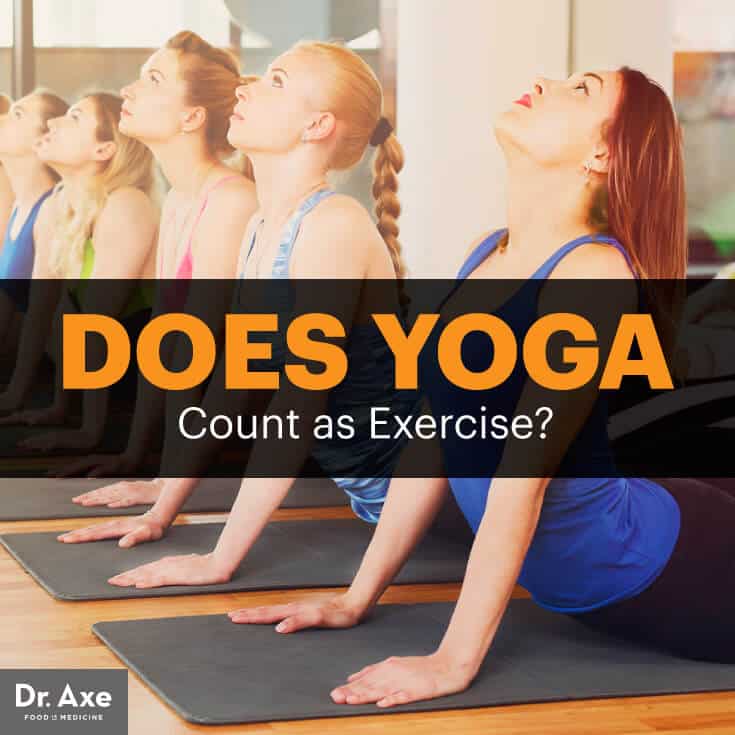This Dr. Axe content is medically reviewed or fact checked to ensure factually accurate information.
With strict editorial sourcing guidelines, we only link to academic research institutions, reputable media sites and, when research is available, medically peer-reviewed studies. Note that the numbers in parentheses (1, 2, etc.) are clickable links to these studies.
The information in our articles is NOT intended to replace a one-on-one relationship with a qualified health care professional and is not intended as medical advice.
This article is based on scientific evidence, written by experts and fact checked by our trained editorial staff. Note that the numbers in parentheses (1, 2, etc.) are clickable links to medically peer-reviewed studies.
Our team includes licensed nutritionists and dietitians, certified health education specialists, as well as certified strength and conditioning specialists, personal trainers and corrective exercise specialists. Our team aims to be not only thorough with its research, but also objective and unbiased.
The information in our articles is NOT intended to replace a one-on-one relationship with a qualified health care professional and is not intended as medical advice.
Does Yoga Count as Exercise? Scientists Weigh In
October 3, 2016

If you caught wind of a recent study, you may be asking yourself, “Does yoga count as exercise?” If you’ve been unrolling your yoga mat each day as a way to meet your recommended 30 minutes of daily exercise, the answer may be no, depending on the type of yoga you practice.
Researchers found that a popular form of yoga known as hatha yoga doesn’t offer the cardiovascular advantages to count toward your recommended half hour of moderate- to vigorous-intensity physical activity each day. (1)
According to Yoga Journal, hatha yoga refers to a set of physical exercises (known as asanas or postures), and sequences of asanas, designed to align your skin, muscles, and bones. The postures are also designed to open the many channels of the body — especially the main channel, the spine — so that energy can flow freely. (2) While it may not be as intense as other forms of yoga, it certain offers some major benefits. We’ll touch on those in a bit.
Does Yoga Really Count Toward Your 30 Minutes of Exercise a Day?
The recommendation of 30 minutes of physical activity comes from guidelines set by the American College of Sports Medicine and the American Heart Association. In the latest study, researchers reviewed 17 existing studies that looked at the energy and intensity involved in practicing hatha yoga. The scientists found that with the exception of a few individual poses, hatha yoga is a lighter-intensity physical activity.
In other words, you’re not working up enough of a sweat to count toward your half hour of exercise. Previous studies have also found that hatha yoga provides “little, if any” cardio workout benefits. (3) (Walking to lose weight is generally considered a good starting point for moderate-intensity workouts.)
So does that mean you should skip yoga altogether? Read on before you give up those namastes.
Different Forms of Yoga
While the term yoga is often used as a catch-all phrase, not all yoga is created equal. There’s likely a style of yoga practice that suits everyone, whether you like steady movement, prefer a more meditative practice, have zero flexibility or think you’re someone who could “never do yoga.” Check out some of the most common types.
Hatha yoga
While hatha yoga originally just meant the physical side of yoga – as opposed to the chanting or breathing – it’s now usually used to refer to a calm, gentle class that’s less about moving through poses and more about focusing on a few. Hatha yoga tends to involve postures (asanas) and breathing (pranayama) and meditation (dhyana). (4)
Bikram or hot yoga
Bikram yoga is done in a heated room, which is supposed to help release toxins from your body. (It’s also often referred to as hot yoga.) Designed by Birkam Choudhury in the ‘70s, any Bikram class will do the same sequence of 26 poses that Choudhury created. Some studios will do lead classes that aren’t Bikram, but still take place in a heated room.
This style of yoga is all about using props like straps, bolsters, pillows and blankets to chill out while coaxing the stress out of your body. It’s a lovely way to wind down a weekend or evening.
Vinyasa yoga
In this fast-paced style of yoga, you’ll flow from one pose to the next with little to no rest in between. You’ll raise your heart rate, but it’s advised you take a few beginner classes before jumping in.
Yin yoga
In yin yoga, the focus is on seated postures that are held for long periods of time to ease tension out of muscle tissue while increasing flexibility and allowing the mind to quiet.
Hatha Yoga Benefits: Why It’s Still (Totally!) Worth It
With so many styles of yoga to choose from — and a few, like vinyasa and hot yoga giving your body a more vigorous workout — is hatha yoga even worth practicing? The answer is a resounding yes.
1. It Improves Your Strength and Endurance
For starters, hatha yoga improves muscular strength. In a study of 71 healthy individuals of different ages, practicing yoga for an hour daily for 12 weeks increased flexibility and muscular strength. It even helped slow down age-related deterioration. (5)
And though hatha yoga doesn’t “count” as cardio, it can still have a positive effect when you do go running or hit the pool. Regularly practicing hatha yoga has been found to increase cardiorespiratory endurance by decreasing resting heart rate while increasing maximum oxygen consumption, which helps determine how long and how hard you can work. (6)
A lower resting heart rate also means your heart isn’t working as quickly to pump blood throughout your body, which decreases your risk of heart-related diseases.
2. It Helps Manage Your Mood
Does hatha yoga count as exercise in the cardio sense? No. But if you’re feeling the blues, hatha yoga can help improve your mood. One study found that women who participated in 8 weeks of hatha yoga enjoyed a decrease in depression symptoms after the two months. The participants didn’t just feel good after yoga, but rather reported that they’d gained a natural strategy for coping with their depression. (7)
Another review of studies revealed that yoga was an effective way of complementing medicine for adults with schizophrenia and sleep disorders and children with symptoms of ADHD. (8)
3. It Reduces Stress and Fatigue
Forget stress eating or sipping a glass of wine. Hatha yoga is a calorie-free way to manage stress. One study found that a 90-minute session significantly reduced stress in participants, while a regular practice reaped even more benefits, like lower heart rates and less overall stress. (9)
For breast cancer survivors, hatha yoga has also been proven to reduce inflammation and fatigue. (10, 11) Because chronic inflammation and fatigue not only adds to disease – after all, inflammation is the root of most diseases – but can lead to a decreased quality of life for survivors, “yoga interventions” are now being recommended.
4. It Literally Changes Your Brain
Have you ever wondered how yoga changes your brain? Scientists are now able to show that hatha yoga practitioners actually have greater gray matter in the brain. Practicing hatha yoga techniques, which include physical postures, breathing exercises and meditation, tend to induce a state of mindfulness leading to this beneficial brain change. (12)
Wonderful side effect? Achieving this mindfulness state is a proven pill-free technique to lower cortisol levels.
5. It Builds Better Balance
If you’re looking to improve emotional and physical balance, hatha yoga is the practice for you. A 2014 study found that hatha yoga actually improves balance even in young adults. That’s especially important, as too much sitting seen in this generation leads to poorer balance and instability. (13) A 2015 study looking at hatha yoga’s impact on spinal flexibility in older women found that practicing for an hour a week is an effective way to improve flexibility in this group. That’s important, as flexibility can help older people maintain independence and reduce their risk of falls. (14)
Final Thoughts: Does Yoga Count as Exercise?
So does yoga really count as exercise? Maybe not in terms of the cardiovascular workout you need. But our health is so much more than cardio. Think about flexibility, emotional health and creating a strong core and balance. So if you’ve been enjoying a hatha yoga practice, there’s absolutely no reason to give it up in light of this recent study.
Instead, you should consider incorporating other exercises to meet your 30 minutes of daily exercise instead. HIIT and tabata workouts are terrific ways of squeezing in a tough workout in a short amount of time. And if you aren’t practicing hatha yoga yet — well, what are you waiting for?









